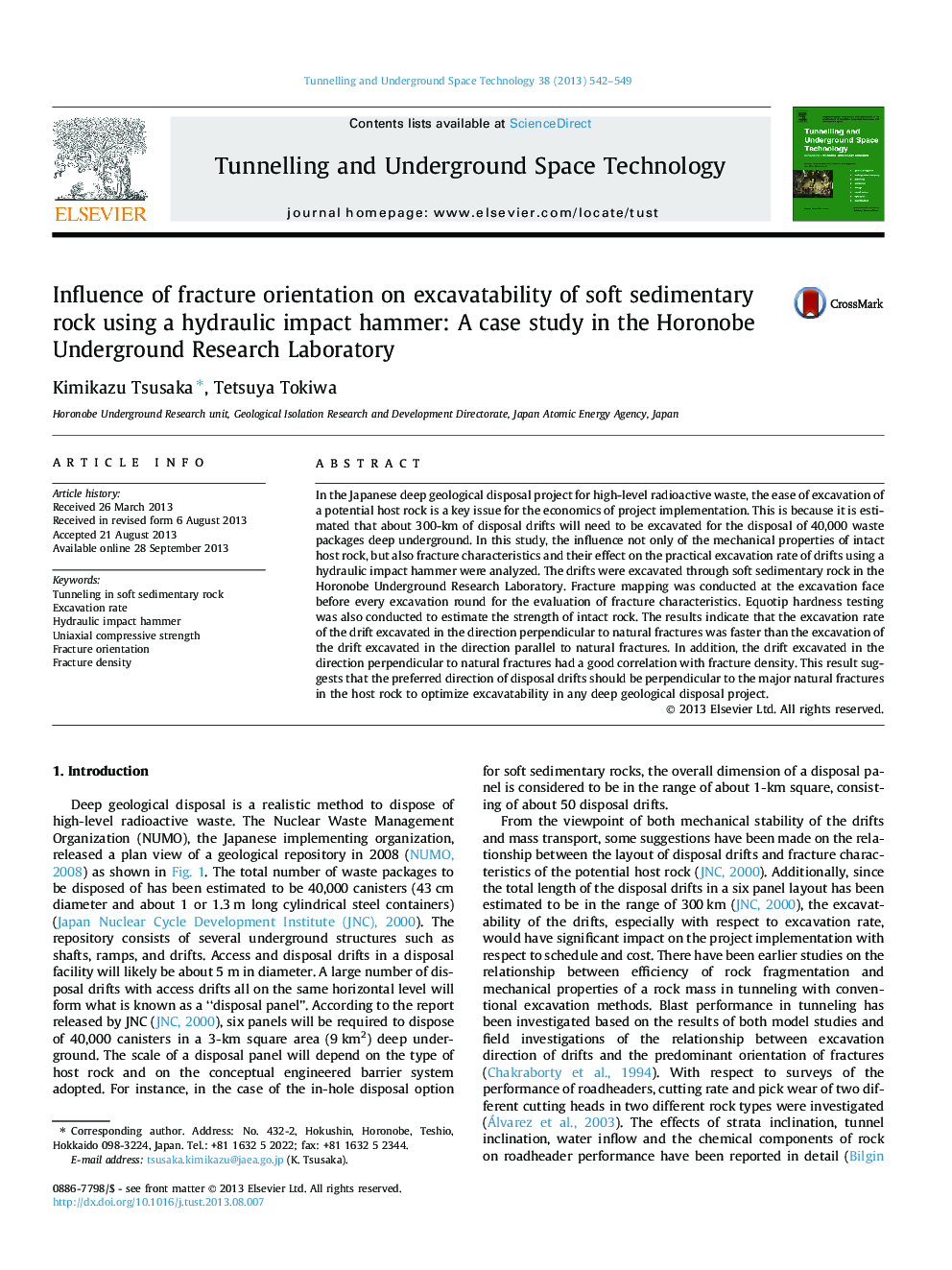| کد مقاله | کد نشریه | سال انتشار | مقاله انگلیسی | نسخه تمام متن |
|---|---|---|---|---|
| 310682 | 533341 | 2013 | 8 صفحه PDF | دانلود رایگان |

• Relationship between excavation rate and fracture characteristics was analyzed.
• Excavation rates of drifts in the directions normal to each other were compared.
• The drifts were excavated using a hydraulic impact hammer in soft sedimentary rock.
• Fracture mapping and Equotip hardness test were conducted.
• Excavation rate depended on fracture density in the drift normal to fractures.
In the Japanese deep geological disposal project for high-level radioactive waste, the ease of excavation of a potential host rock is a key issue for the economics of project implementation. This is because it is estimated that about 300-km of disposal drifts will need to be excavated for the disposal of 40,000 waste packages deep underground. In this study, the influence not only of the mechanical properties of intact host rock, but also fracture characteristics and their effect on the practical excavation rate of drifts using a hydraulic impact hammer were analyzed. The drifts were excavated through soft sedimentary rock in the Horonobe Underground Research Laboratory. Fracture mapping was conducted at the excavation face before every excavation round for the evaluation of fracture characteristics. Equotip hardness testing was also conducted to estimate the strength of intact rock. The results indicate that the excavation rate of the drift excavated in the direction perpendicular to natural fractures was faster than the excavation of the drift excavated in the direction parallel to natural fractures. In addition, the drift excavated in the direction perpendicular to natural fractures had a good correlation with fracture density. This result suggests that the preferred direction of disposal drifts should be perpendicular to the major natural fractures in the host rock to optimize excavatability in any deep geological disposal project.
Journal: Tunnelling and Underground Space Technology - Volume 38, September 2013, Pages 542–549